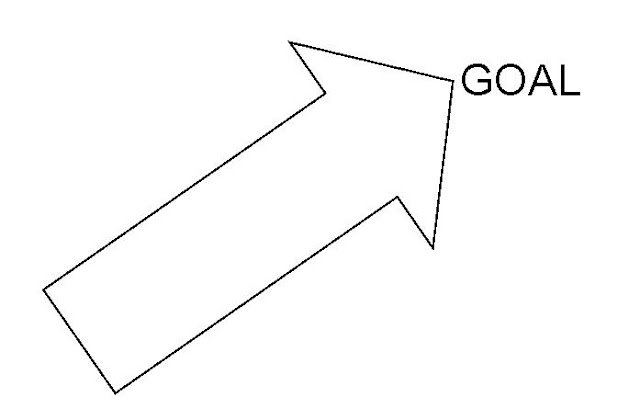______________
Making The Right Decisions
______________
This tool is valuable in both a personal requirement for decision making, or as a manager/owner of a business creating direction for staff and equipping them to make decisions for the success of your organization.
Scenario One: Personal - each arrow detailed below will represent individual choices and decisions that you face every day in your personal life
Scenario Two: Business - each arrow detailed below represents a staff member and the roles they serve within your organization.
As you follow down through the framework below, you may choose to select either of the Scenarios (above) or both.
The most important step in insuring your decisions are the correct ones, is to talk time, to determine what your overall goal is for your success. This is a critical step and may take minutes to hours to decide. Your goal cannot be a vague broad scoping one.. ie: want my business to be successful, or I want to be rich. I MUST be very specific and measurable. Rather than wanting your business to be a success, you may want to be much more specific as to what will make it a success. Sell more?? - nope still too vague. Maybe, I want my business to grow 15% and insuring that we have 85% repeat customers and grow my customer base by 15%.
With the personal Scenario, rather than a goal of being rich, you may be much more specific. I want to decrease my spending by 20%, and invest that savings in investments. In two years I want a positive net worth.
Regardless of what you decided your goal to success it - is it so critical that it is narrow in focus, exactly what you want, and achievable. And it need not involve money, ic can be how you want to be perceived liked, raise your children, or different career choices.
Once you have defined your goal, imagine it in the illustration below at the point of an arrow..
Now this is where it gets interesting, you will be faced (or your staff will be tasked) with many decisions, most common, we assess the choice and make the decision on the circumstances that surround us at the moment. Staff will make decisions based on the small section of the business that they are familiar, often in the dark of other requirements of the company success.. Therefore if we fill in the arrow to your goal, it will probably look like this:
The secret is to attempt to align individual decisions, or staff members - all directed toward your goal. EVERY decision, from what you eat, to what house you buy. In business, every staff member MUST be clearly instructed to ask the following:
Does this [choice] bring me closer to [my goal]?
If the answer is yes, then it should be seriously considered, if the answer is no, then no matter how tempting, then that is not a direction to follow.
If this exercise is achieved for every decision, or each staff member follows this framework, then coming closer to your objectives will look more like this:
So why does it matter if all of your arrows align towards your goal. Well it is obvious that with every choice moving you towards your objective, then it will be reached much less painfully and significantly faster, and in a business scenario - much cheaper.
Now lets take a look at grade 6 vector mathematics, to illustrate the efficiency of aligning your decisions and staff.
If you apply 100% of your effort toward one goal, and 100% of your effort towards a different goal. Then your net progress towards success is wasted effort, and you achieve much less that an addition of your two efforts.Or in a business scenario you have one staff member you are paying for a day of work travelling in one direction, and another in a slightly different direction, you are only getting 1.5 days work and paying for 2.
In extreme cases, full effort may be made for 2 choices, but counter each other (in respect to your goal) and you have worked hard, to achieve virtually nothing. In business, you may be paying for 2 days work, yet virtually throwing the money away. A real life example of a business case, would be a company deciding on a goal described above - 85% customer retention, 15% addition of new customers and a 15% revenue growth. Accounting decides on a new process that will make their work much easier, and a company at first glance much more efficient. However, the new process is clumsy, complicated for the customer.. resulting in losing customers, and pushing away new clients. Obviously, the decision to implement a new accounting system was not run through the simple question.. "Will changing our accounting system get us closer to our goal of 85% customer retention, 15% new clients, and 15% revenue growth". Expensive step in the wrong direction. This is how it looks like in vector addition.
Now that you have clearly defined your goal and you hold every decision up to it, facing 2 decisions, applying 100% of your effort to both.. you waste no time, you leap towards your goal. You are not distracted by "fun", or "tempting" decisions that steer you away from your goal. ALL decisions become very simple.. Do they get me closer to my goal.. yes or no.. That easy.
Business, you are paying 2 staff to work 8 hours. Working toward the same goal. you get 16 hours worth of work for your 16 hours of pay.
For personal decision making - define your goal.. and think of these arrows.
For Business.. as an owner or manager, define your business goals, communicate it clearly and often to ALL staff. and measure, measure, measure the success.







No comments:
Post a Comment